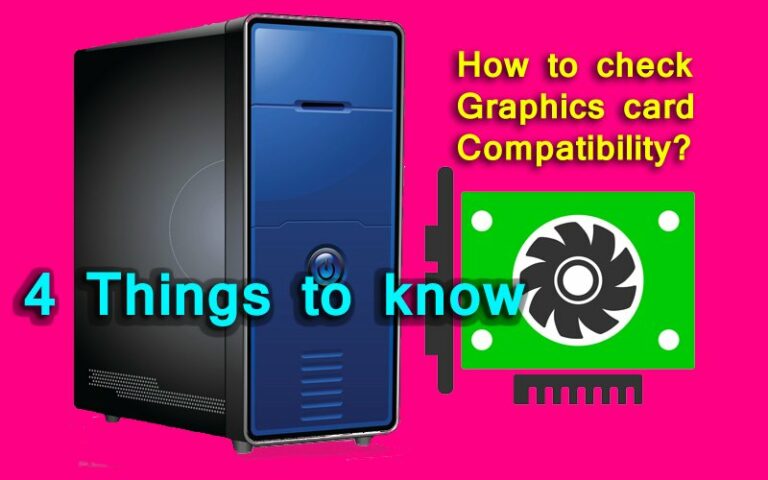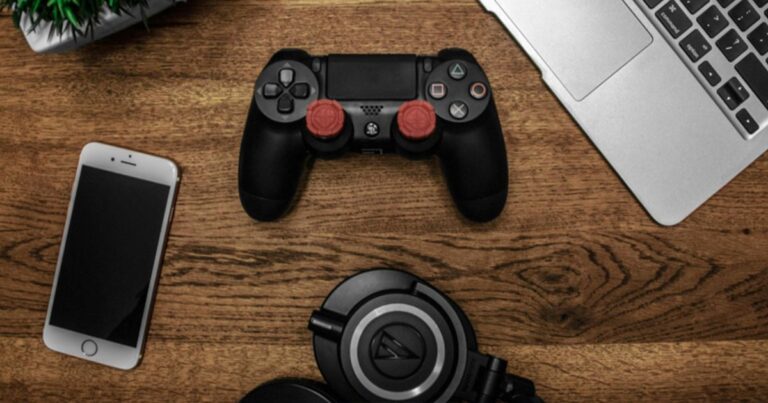If you’re a gamer, chances are you’ve already invested in a graphics card. But what makes a graphics card compatible with your PC?
The graphics card compatibility scan is a tool that you can use to determine if your graphics card is compatible with your PC.
You want to play some amazing AAA games or simply do some casual gaming, and you’re ready to purchase a graphics card, but you’re not sure whether your graphics card will work with your system.
This is one of the most frequent issues that new gamers have, and I was one of them when I first began playing PC games. To prevent incompatibility in all areas, there are a few things to consider before buying a graphics card. This will not only save you money, but it will also guarantee that your graphics card is free of bottlenecks and other performance issues.
Every PC’s graphics card must be compatible with four things:-
- Motherboard
- Electricity
- Processor
- Chassis
- Monitor
Compatibility of graphics cards and motherboards
To ensure that a graphics card is compatible with the motherboard, you must first choose the kind of graphics card you want to utilize. Is it a Radeon H3850 or any older AGP graphics card? Is it a PCI express graphics card, or something else?
Most likely, it will be a PCI express graphics card with pins or a connection that looks like this:-
You’ll need a PCI-E x16 slot on your motherboard for a connection like this, which looks like this:
The picture above depicts a modern PCI-E x16 slot with an opening latch on one of its ends for locking the graphics card in place. The latch may vary, but the slot will always be about 89mm in length.
If your graphics card and the motherboard both have these two slots, your graphics card is completely compatible with the motherboard.
Compatibility of graphics cards with power supplies
After you’ve determined whether or not the GPU you wish to purchase is compatible with your motherboard, be sure your power supply can handle it. A power supply is responsible for providing your graphics card with the proper voltage and power.
Connector
Low-profile graphics cards don’t even need an additional power supply since the motherboard PCI slot can handle up to 75 watts of electricity. However, if your graphics card has a power connection like the one shown below, which may range from a single 6 pin to double 8 pins, you’ll need a power supply with a PCI-E connector cable with the appropriate number of connector pins.
Make sure your power supply has at least a single 6 pin PCI connection cable if your graphics card has a single 6 pin connector. Similarly, if your graphics card has a dual 8-pin connection, your power supply must have a dual 8-pin connector cable as well, otherwise your graphics card may not turn on.
– Resolve the problem of the graphics card not being detected
Wattage
If your graphics card has low profile, you don’t need to worry about the wattage of your power supply, but for consistent operation, it’s best to choose a continuous power supply rather than a peak power supply.
If your graphics card has a power connection, find out how much watts it uses. This information is readily available on the manufacturer’s website. Because they are factory-overclocked, aftermarket or custom graphics cards that vary from reference cards often use more power. Make sure to check out the GPU page on the official website to see how much power it uses and what power supply they suggest.
A high-end graphics card like the RTX 2080 Ti won’t operate correctly on a 450 watt power supply, especially since all of your other components are likely to be high-end as well. Also, two 8-pin connections are uncommon on a 450-watt power supply. For future-proofing, you’ll need to utilize a higher-wattage power supply, and it’s better to follow the manufacturers’ recommendations.
For the greatest performance, check out our selection of the top power supplies.
Compatibility between graphics cards and processors
In general, all contemporary CPUs are compatible with all graphics cards, from low-profile to high-end, but it doesn’t mean your system shouldn’t be balanced. A strong graphics card such as the RTX 2080 should not be paired with a Pentium CPU. Although the Pentium CPU will support the RTX 2080, it will not provide the intended results for which the RTX 2080 was designed.
In terms of performance, always compare and verify CPU-GPU compatibility. To learn more, read the following articles:-
–Best 1080p CPU-GPU combinations –Best 1440p CPU-GPU combos –Best 4K CPU-GPU combos
Compatibility of graphics cards with chassis
Your computer’s chassis should be large enough to accommodate the graphics card you’ll be using. Before you purchase, double-check the size of your graphics card. Check to see how much space your case has. You may look it up on the chassis manufacturer’s website or measure it yourself using a ruler.
Some cases are modular, with front-mounted hard drive cages that may be removed to accommodate lengthy graphics cards. Take it into account as well. Some cases are extremely narrow, and your graphics card may be bigger than or even equal to the case’s width. In both instances, you won’t be able to install the graphics card since the motherboard, motherboard tray, back panel, and other components will take up too much space, leaving no room for your graphics card. Make sure there’s adequate room for cable connections as well.
Best Cable Management Cases may be found here.
Compatibility of graphics cards with monitors
While most of us simply opt for the graphics card if all four of the aforementioned problems are solved, it’s also critical to know whether or not your graphics card is compatible with your display.
You should double-check that the graphics card you’re purchasing has the same connections as your display; otherwise, you may have to purchase a converter. Check out our complete guide to determining whether or not a graphics card is compatible with a display.
Is there anything else you’d want to know?
If you have any questions that weren’t addressed in these four stages, please post them in the comments area below!
The motherboard graphics card compatibility checker online is a tool that allows users to see if their motherboard graphics card is compatible with their PC.
Related Tags
- motherboard graphics card compatibility checker
- graphics card compatibility check online
- graphics card compatibility checker
- graphics card upgrade checker
- gigabyte motherboard compatible graphics card











